The advantages of proton therapy:
A complete protontherapy
facility layout proposal


Tumors that can be treated with proton therapy*
*Illnesses treated in Italy at already operational centers (Source: CNAO)
Proton therapy is considered the most advanced radiotherapy treatment available today.

ERHA: proton therapy
made in Italy
Proton therapy is an innovative technology that uses beams of protons produced by a particle accelerator to treat tumors. ERHA stands out as a worldwide unique system and this is for the following reasons:
| Spot size | Energy modulation | Intensity modulation | |
|---|---|---|---|
| Cyclotron | |||
| Synchrotron | |||
| Linac | |||
| Comparison between LINAC and other particle accelerators used for ProtonTherapy | |||
5 reasons to choose ERHA, the Enhanced Radiotherapy with Hadrons
Lower price compared to existing systems.
Respect for the environment: it has almost negligible both instant and induced radiations, it avoids the need for large amounts of concrete shielding and it reduces problems of decommissioning and disposal of radioactive waste at the end of its life (20-30 years).
Small footprint: our structure extends mostly in length and requires a surface area of less than 100sqm. Therefore, it has very little impact compared to existing PT structures.
Easy to set up in a shielded corridor, a warehouse or a parking lot, as it requires only a small flat surface.
Ease of management by operators: the number of devices is reduced and control is achieved by a single software interface.
Linearbeam ERHA Proton Therapy System is not yet approved for clinical use.





